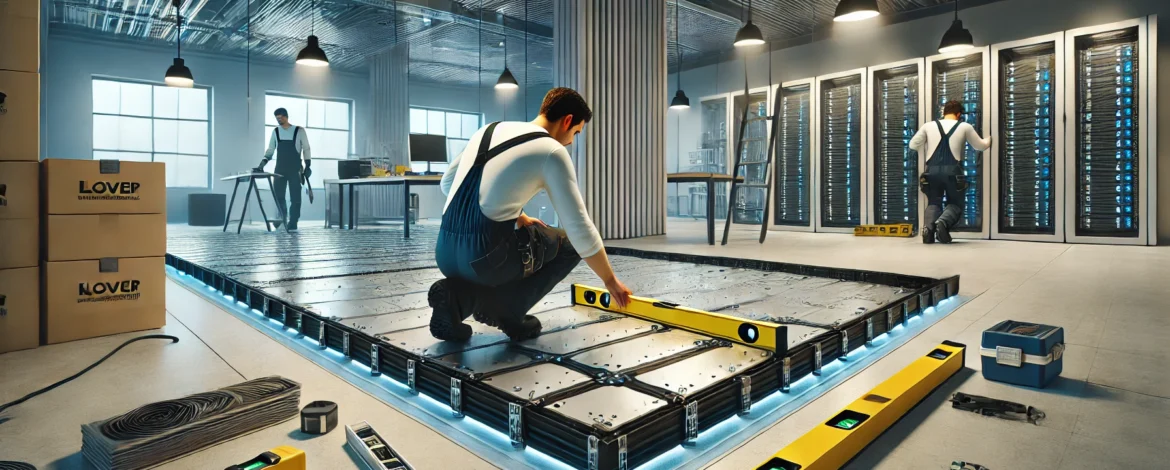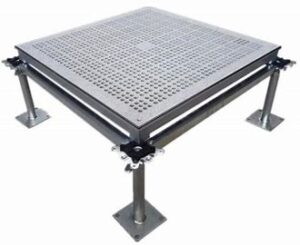Common Mistakes in Raised Flooring Installation and How to Avoid Them
Raised flooring systems are an excellent choice for modern offices and data centers, but improper installation can lead to costly issues. Discover the common mistakes in raised flooring installation and how to avoid them, ensuring a durable, safe, and efficient system. This guide is your go-to resource for flawless raised floor setup, saving time and money.
Common Mistakes: Installing a raised flooring system is a smart investment for creating versatile spaces, especially in offices, server rooms, and commercial areas. However, even the best products can fail if improperly installed. Avoid these pitfalls by understanding the common mistakes in raised flooring installation and how to avoid them.
Common Mistakes in Raised Flooring Installation
- Inadequate Subfloor Preparation
One of the biggest errors is neglecting to properly prepare the subfloor. Uneven surfaces, debris, or moisture can lead to instability and long-term damage.
Solution: Inspect and clean the subfloor thoroughly. Use a leveling compound for any uneven areas.
- Incorrect Panel Alignment
Misaligned panels compromise structural integrity and aesthetics.
Solution: Use grid layouts and precise measurements to ensure accurate alignment.
- Ignoring Load Requirements
Underestimating weight limits can result in panel breakage or collapse.
Solution: Choose panels designed for the expected load and confirm specifications with the manufacturer.
- Improper Fastening
Loose fasteners can lead to panel movement, making the floor unsafe.
Solution: Secure panels firmly using the appropriate hardware.
- Skipping Moisture Barriers
Rising moisture can damage flooring materials and create mold problems.
Solution: Always install a high-quality moisture barrier for long-lasting performance.
- Failing to Account for Expansion and Contraction
Temperature changes can cause materials to expand or contract, leading to gaps or warping.
Solution: Leave proper gaps as recommended by the manufacturer.
- Overlooking Cable Management Needs
Raised floors are often used for concealing cables, but poor planning can lead to congestion.
Solution: Plan cable pathways during the design phase and use dedicated trays.
- Improper Panel Cutting
Cutting panels incorrectly can result in gaps or poor fits.
Solution: Use proper tools and techniques for precision cuts.
- Failure to Test Stability
Installing the flooring without testing its stability can lead to safety hazards.
Solution: Conduct weight and stability tests before completing the project.
- Neglecting Routine Maintenance
After installation, a lack of maintenance can degrade performance.
Solution: Schedule regular inspections and maintenance checks.
Common Mistakes: How to Avoid These Mistakes
By following these best practices, you can avoid the common pitfalls of raised flooring installation:
- Work with experienced professionals.
- Use high-quality materials from reputable suppliers.
- Follow manufacturer guidelines meticulously.
- Plan for long-term needs, including maintenance and upgrades.
A successful raised flooring installation not only enhances functionality but also ensures safety and efficiency in your workspace. Understanding the common mistakes in raised flooring installation and how to avoid them can save significant costs and hassles.
| Specification | Details |
|---|---|
| Product Type | Raised Flooring Installation Guide |
| Focus | Common Mistakes and Solutions |
| Ideal For | Offices, Data Centers, Commercial Spaces |
| Subfloor Requirements | Clean, Level, Dry |
| Panel Materials | Aluminum, Steel, Wood Core |
| Panel Load Capacity | 500-1,500 lbs |
| Alignment Tools | Laser Levels, Grid Templates |
| Moisture Barrier Requirement | Mandatory |
| Fastening Hardware | Screws, Bolts, Adhesives |
| Expansion Gap Allowance | 1/8″ to 1/4″ |
| Cable Management Options | Trays, Channels |
| Cutting Tools | Circular Saws, Jigsaws |
| Installation Team Recommended | Yes |
| Maintenance Frequency | Quarterly |
| Warranty | Dependent on Manufacturer |
1. What is a raised flooring system?
A raised flooring system is an elevated structure installed above a subfloor, creating a space for cables, air ducts, and other utilities.
2. Why is subfloor preparation important?
Subfloor preparation ensures a stable base, preventing issues like uneven surfaces and moisture damage.
3. Can I install raised flooring myself?
While DIY installation is possible, professional installation is recommended to avoid common mistakes and ensure longevity.
4. How do I choose the right panels?
Consider the load capacity, material, and intended use of the space when selecting panels.
5. How often should raised floors be maintained?
Regular maintenance should be conducted at least quarterly to ensure safety and functionality
Why Choose “Common Mistakes in Raised Flooring Installation and How to Avoid Them”
This guide is your ultimate resource for ensuring a flawless raised flooring system. By addressing common mistakes and offering practical solutions, you’ll:
- Save Money: Prevent costly repairs and replacements.
- Improve Safety: Ensure a stable and secure flooring system.
- Enhance Longevity: Maximize the lifespan of your raised floors.
- Simplify Installation: Follow clear, actionable steps.
- Gain Confidence: Avoid pitfalls with expert insights.
Whether you’re a contractor or a DIY enthusiast, this comprehensive guide is an essential tool for a successful raised flooring project
Pros and Cons Table
| Pros | Cons |
| Prevents costly installation mistakes | Requires time for detailed planning |
| Improves safety and structural integrity | May need professional assistance |
| Ensures compliance with best practices | Initial investment in quality materials |
| Enhances aesthetic and functional value | Maintenance demands |
|
|
|
|



